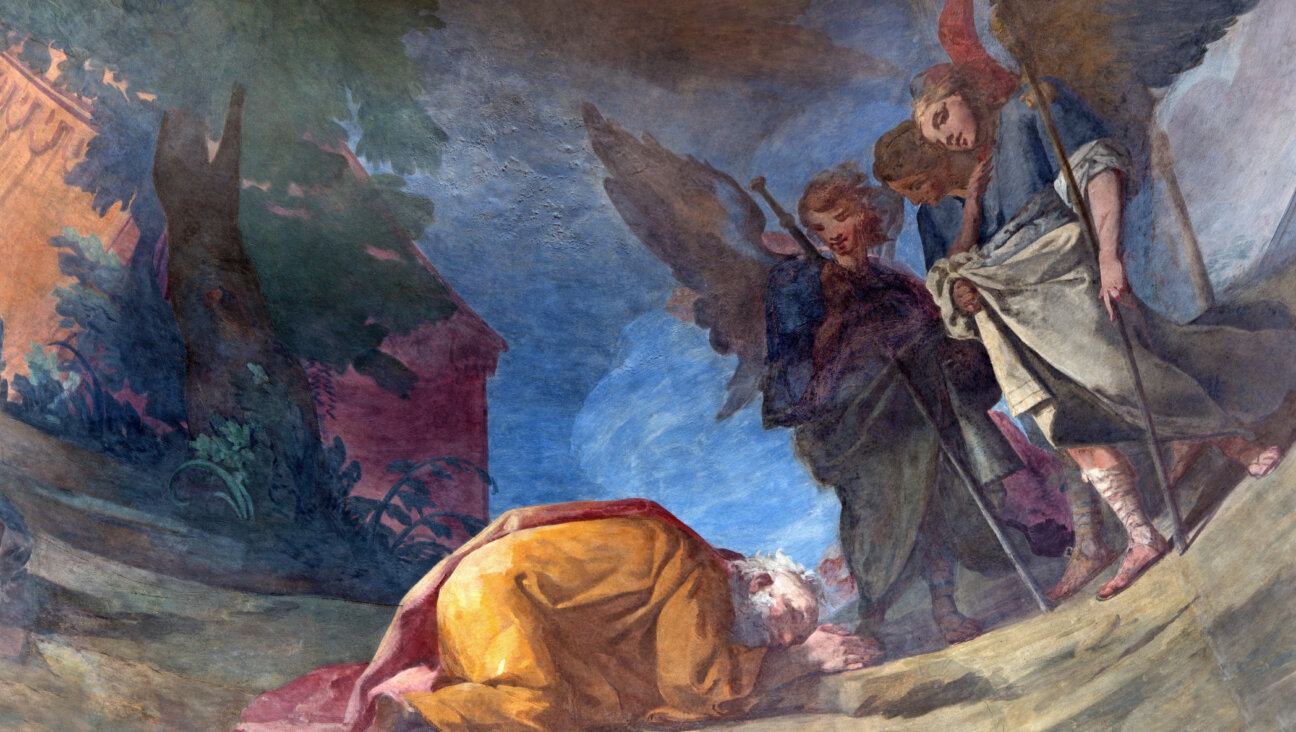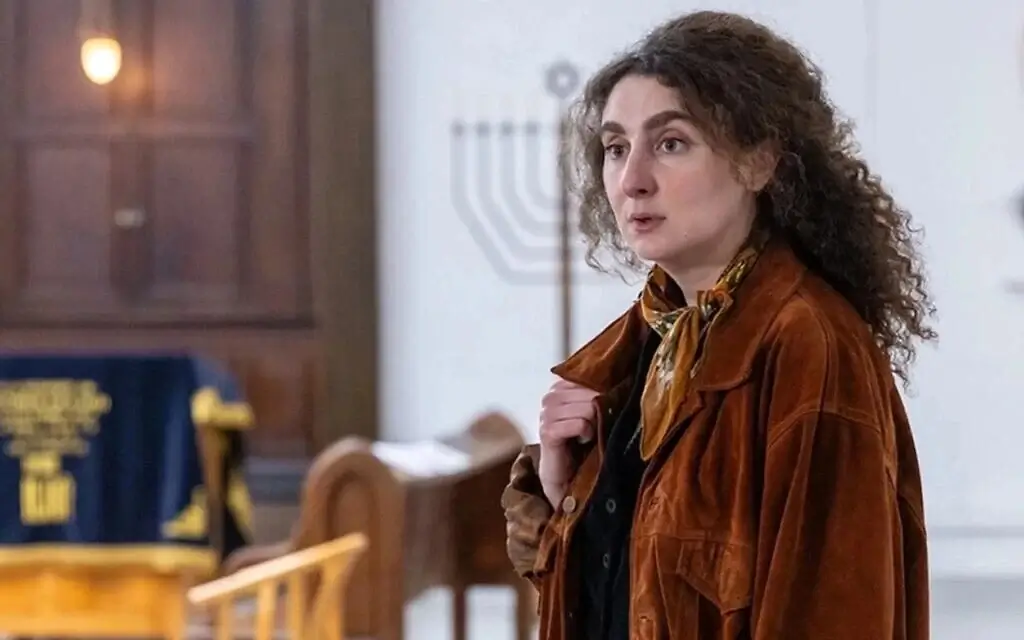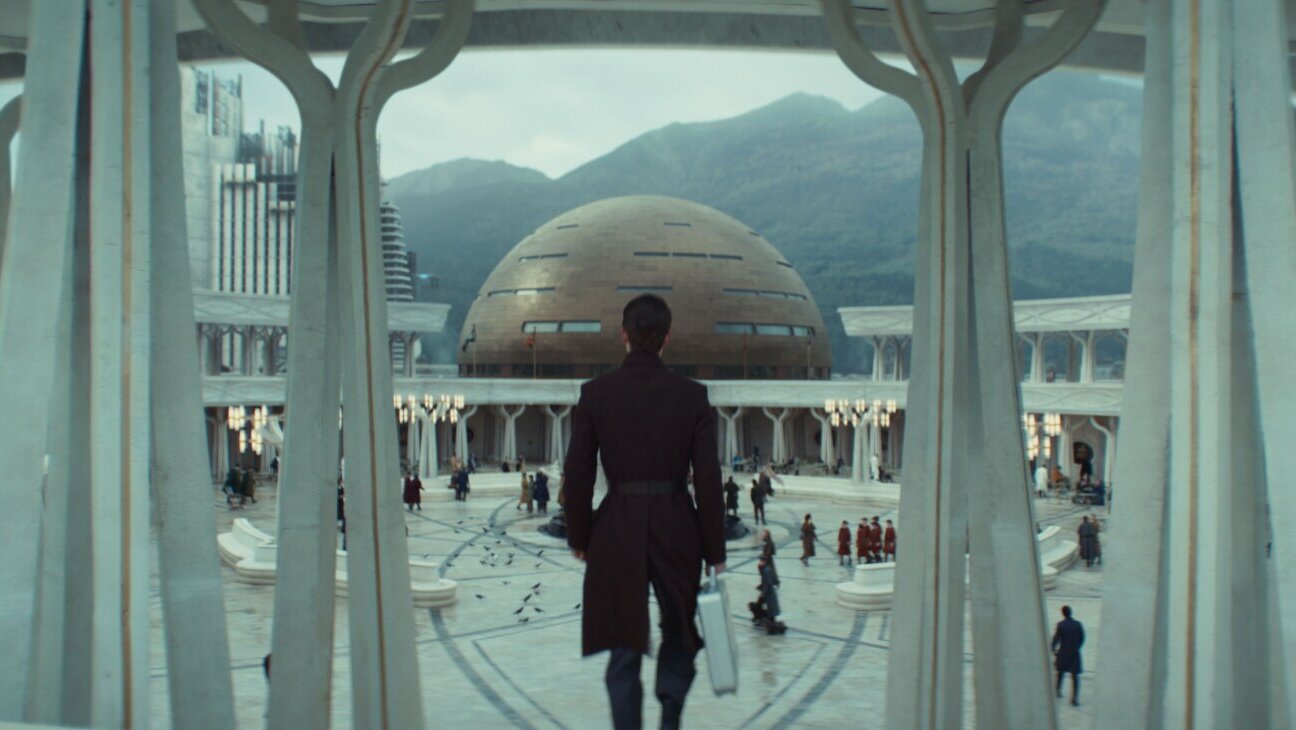Does The New Exhibit At The U.S. Holocaust Museum Go Too Easy On FDR?

WASHINGTON, DC – MAY 2: A man pauses in front of the eternal flame during the annual Names Reading ceremony to commemorate those who perished in the Holocaust, in the Hall of Remembrance at the United States Holocaust Memorial Museum, May 2, 2016, in Washington, DC. Marking the anniversary of the Warsaw Ghetto Uprising, Holocaust Remembrance Day is an internationally recognized date corresponding to the 27th day of Nisan on the Hebrew calendar. In Hebrew, Holocaust Remembrance Day is called Yom Hashoah. This year Holocaust Remembrance Day begins in the evening of May 4 and ends in the evening of May 5. (Drew Angerer/Getty Images)
On April 23, 2018, the United States Holocaust Memorial Museum in Washington, DC opened “Americans and the Holocaust,” a new exhibit that places American public opinion in its crosshairs and hopes to buck the belief that many Americans were unaware of the full scale of Nazi Germany’s crimes.
“Without offering excuses, the exhibit probes the explanations for this lacuna, including the impact the Great Depression had on the American people, and powerful currents of xenophobia and isolationism,” the Washington Post’s editorial board wrote, adding that “President Franklin D. Roosevelt took the nation to war, but he did not take the lead on a rescue of the Jews, a decision still much debated. The exhibit does not alter the known facts of Mr. Roosevelt’s logic.”
But a report released on June 27, 2018 by the David S. Wyman Institute for Holocaust Studies, a DC-based organization dedicated to teaching the history of American’s response to the Holocaust, claims the exhibit does not go far enough in condemning FDR’s inaction in light of new evidence. The 10 author report, “Distorting America’s Response to the Holocaust,” is a series of 10 essays; it asserts that through a series of omissions, misleading language and erroneous claims, the Museum has whitewashed FDR’s record on aiding Europe’s imperiled Jewry from 1933 to 1945.
Dr. Rafael Medoff, a historian and the founding director of the Wyman Institute told the Forward that he and his colleagues — Professor Stephen Norwood, who teaches History and Judaic Studies at the University of Oklahoma and Rabbi Professor David Golinkin, president of the educational organization Schechter Institutes, Inc. in Jerusalem — met with museum staff in January and March of 2017. The Wyman Institute arranged the meetings, eager to share research from scholars currently working in the field.
Their findings, presented for the Museum in an 18-page memorandum, included the Roosevelt administration’s blocking of a plan to resettle Jews in the Dominican Republic, Roosevelt’s personal censoring of an anti-Hitler speech and the decision by two senior members of FDR’s cabinet not to bomb Auschwitz-Birkenau (previously the decision was thought to have been made by lower-level officials).
Medoff says that he walked away from meetings with Daniel Greene, the exhibit’s curator and an adjunct professor of history at Northwestern University, and other staffers, believing that the museum team had already decided their exhibit would airbrush FDR’s legacy.
When the exhibit opened, Medoff visited several times. He took copious notes and photographs and examined the online version of the exhibit. Disappointed by what he saw, Medoff and his colleagues decided to issue their report in response.
Medoff’s contribution, “Making Excuses for FDR,” begins the report and moves from front-to-back of the chronologically arranged exhibit with precision. In 16 pages Medoff indicates a trend of downplaying FDR’s resistance to doing more to help the Jews. He faults the exhibit for failing to mention FDR’s reluctance to speak up after Kristallnacht, his unwillingness to admit Jews to the Virgin Islands and Alaska and his refusal to work around the byzantine visa quota system.
Greene, who read the report online shortly after its release, believes it misrepresents the exhibit.
“We frame this exhibition with two questions: what did Americans know — and we’re trying to teach people that Americans knew more than is assumed by the general public today. And then: What more could have been done? And we repeat many times throughout the exhibition that FDR could have done more on behalf of Jewish refugees,” Greene said, speaking to the Forward over the phone. “The exhibition isn’t ‘FDR and the Holocaust’ it’s ‘Americans and the Holocaust.’”
Although Medoff acknowledges that the exhibit’s scope is wider than just FDR, he views his report’s findings about the 32nd president to be of critical importance in the current political climate.
“The contemporary implications are significant and they’re disturbing for this reason: in every generation there’s a segment of public opinion that is hostile to the idea that America should take any humanitarian interest in people who are persecuted around the world. And such sentiment waxes and wanes. Even during the Holocaust period itself it was not consistent,” Medoff said. “But if you excuse past American presidents for not acting just because there was some sizable portion of the American public that didn’t want him to act, then that paves the way for making the same excuses for contemporary American presidents.”
The Wyman Institute report enumerates many of the period’s events that were left out of the exhibit, including the anti-Nazi activities of Jewish student groups, the complicity of American academia in the legitimizing of Nazism and the near complete absence of FDR’s secretary of Labor, Frances C. Perkins, who, in her capacity, appealed to the president to ease immigration restrictions.
Much of the report concerns the exhibit’s immigration content, but it also includes an analysis of “Confronting the Holocaust,” a 16-minute film that appears on the museum’s website. The short details the ill-fated voyage of the German refugee ship, the St. Louis which, in the summer of 1939, was turned away from Cuba and then Florida before being rerouted to Europe where Great Britain took in some, but not all of the ship’s 937 passengers.
The essay “A Prisoner of Public Opinion” by Laurel Leff, the Associate Director of Jewish Studies at Northeastern University, concludes that the film makes too much of the role of public opinion (even going so far as to speculate on attitudes Americans were never polled about) and not enough of the president’s own influence.
“Had the administration just issued visas up to the quotas, several hundred thousand more refugees could have entered the United States,” Leff wrote, “‘Confronting the Holocaust’ explains none of this””
This kind of speculation did not inform the curator’s decisions. “Exhibitions I think shouldn’t trade in counterfactual history,” said Greene. “This exhibition explores what did happen and tries to explain why, it’s not about what we wished might have happened.”
Questions of space also guided the exhibit’s curatorial philosophy. “The exhibition is about 5,400 square feet and it looks at American history beginning in the 1920s through the end of World War II,” Greene said. “There are many stories we could have chosen to include in the gallery that we didn’t due to limitations of space and scope. And we kept going back to our main objectives which was to provide a panoramic portrait of American society in this period and why, if Americans had so much information accessible to them, why rescue of Jews didn’t become a priority.”
Correction: A previous version of this story wrongly reported that “Confronting the Holocaust” was part of the “Americans and the Holocaust” exhibit. The film was made for another event at the Museum, the 2014 “Days of Remembrance.”
PJ Grisar is the Forward’s culture intern
The Forward is free to read, but it isn’t free to produce

I hope you appreciated this article. Before you go, I’d like to ask you to please support the Forward.
Now more than ever, American Jews need independent news they can trust, with reporting driven by truth, not ideology. We serve you, not any ideological agenda.
At a time when other newsrooms are closing or cutting back, the Forward has removed its paywall and invested additional resources to report on the ground from Israel and around the U.S. on the impact of the war, rising antisemitism and polarized discourse.
This is a great time to support independent Jewish journalism you rely on. Make a gift today!
— Rachel Fishman Feddersen, Publisher and CEO
Support our mission to tell the Jewish story fully and fairly.
Most Popular
- 1
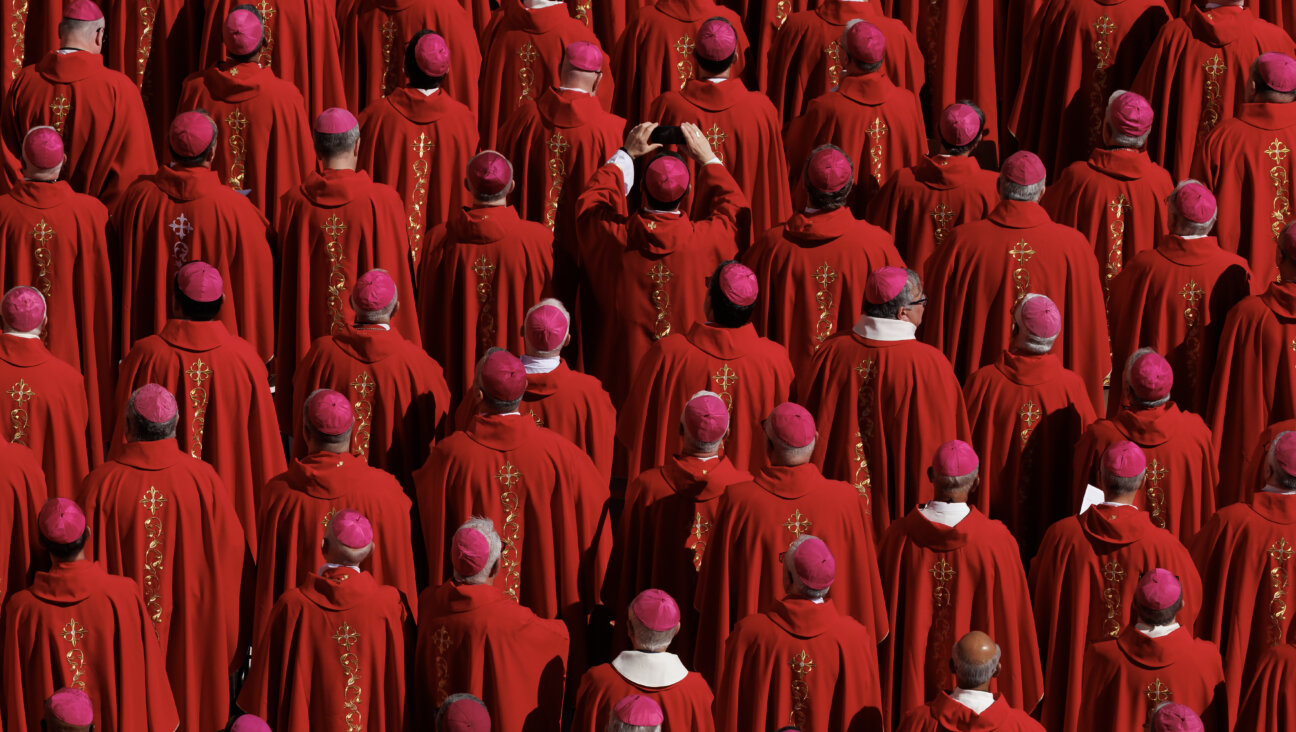
Culture Cardinals are Catholic, not Jewish — so why do they all wear yarmulkes?
- 2

Fast Forward Ye debuts ‘Heil Hitler’ music video that includes a sample of a Hitler speech
- 3

News School Israel trip turns ‘terrifying’ for LA students attacked by Israeli teens
- 4

Fast Forward Student suspended for ‘F— the Jews’ video defends himself on antisemitic podcast
In Case You Missed It
-
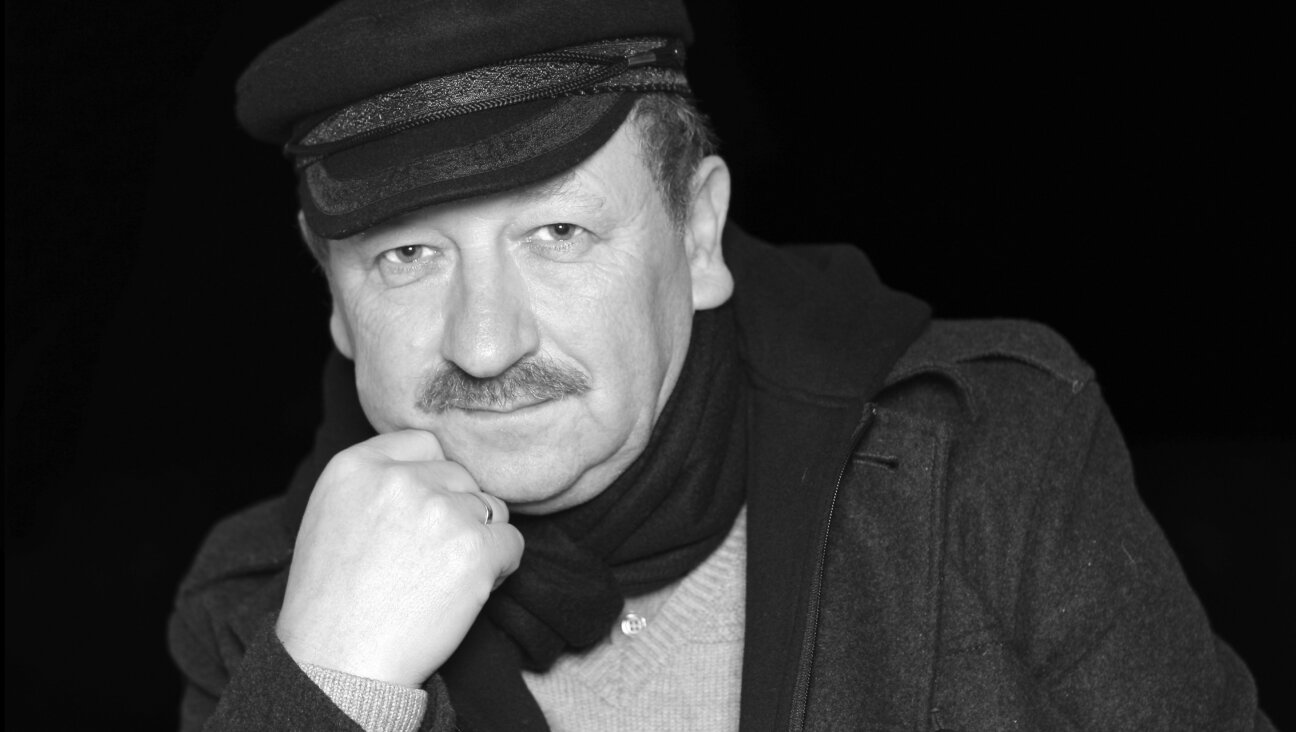
Yiddish קאָנצערט לכּבֿוד דעם ייִדישן שרײַבער און רעדאַקטאָר באָריס סאַנדלערConcert honoring Yiddish writer and editor Boris Sandler
דער בעל־שׂימחה האָט יאָרן לאַנג געדינט ווי דער רעדאַקטאָר פֿונעם ייִדישן פֿאָרווערטס.
-
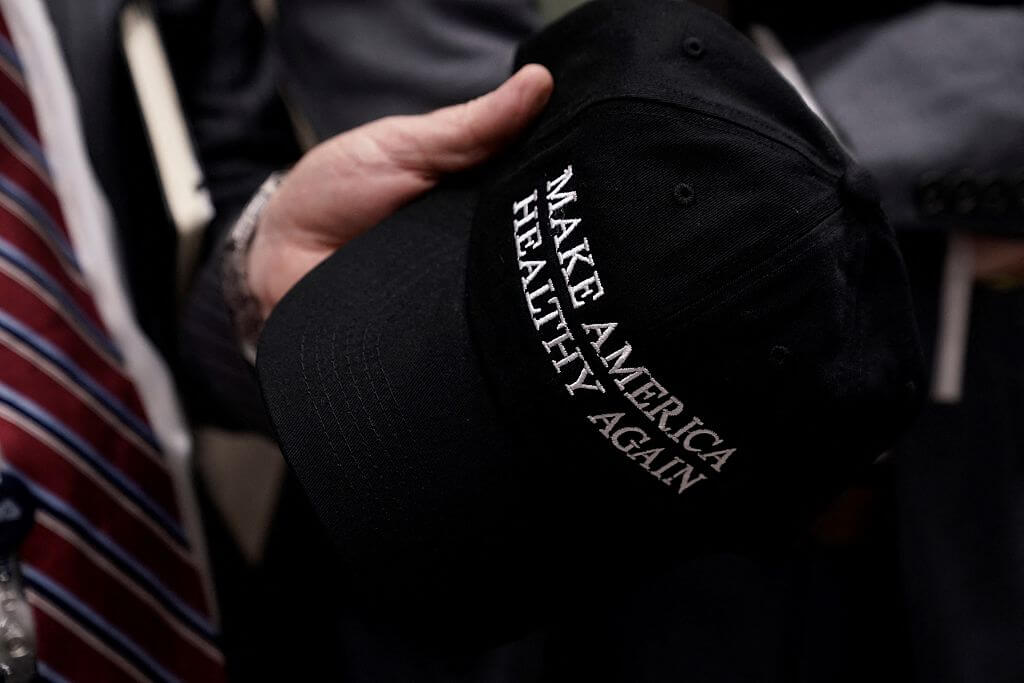
Fast Forward Trump’s new pick for surgeon general blames the Nazis for pesticides on our food
-
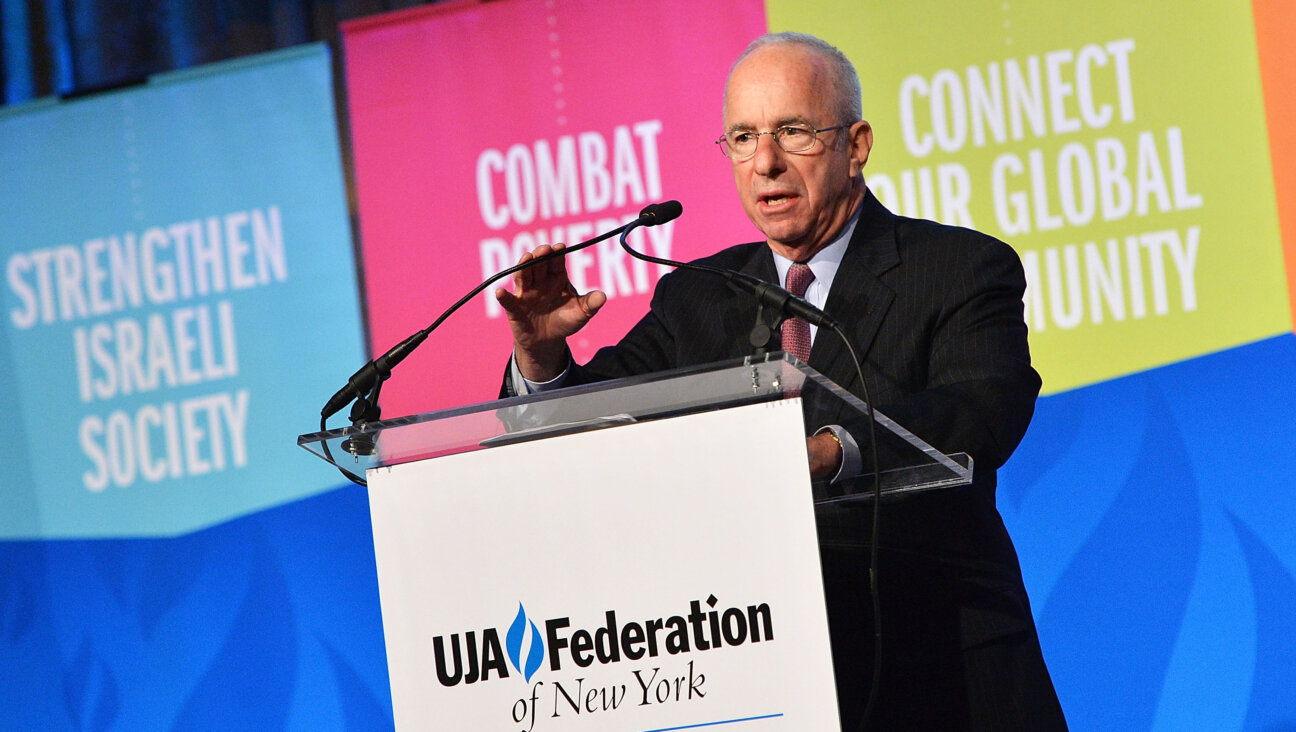
Fast Forward Jewish feud over Trump escalates with open letter in The New York Times
-
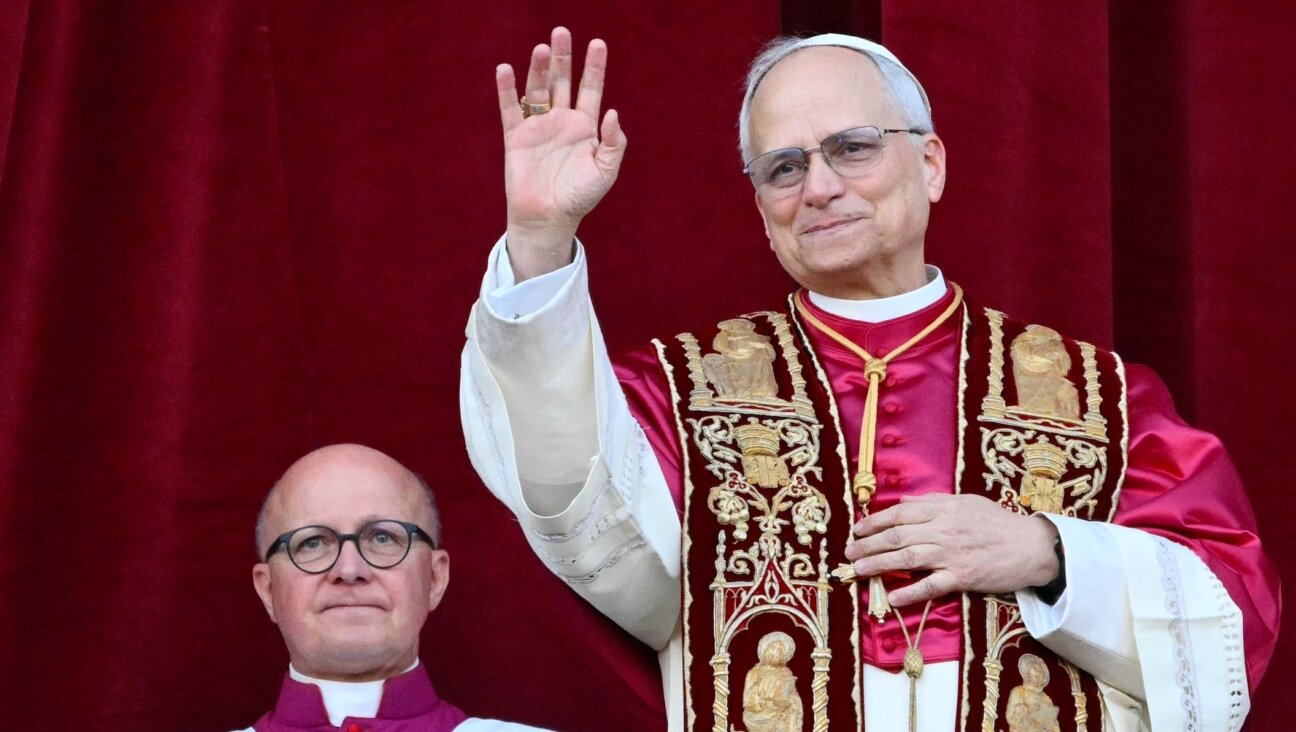
Fast Forward First American pope, Leo XIV, studied under a leader in Jewish-Catholic relations
-
Shop the Forward Store
100% of profits support our journalism
Republish This Story
Please read before republishing
We’re happy to make this story available to republish for free, unless it originated with JTA, Haaretz or another publication (as indicated on the article) and as long as you follow our guidelines.
You must comply with the following:
- Credit the Forward
- Retain our pixel
- Preserve our canonical link in Google search
- Add a noindex tag in Google search
See our full guidelines for more information, and this guide for detail about canonical URLs.
To republish, copy the HTML by clicking on the yellow button to the right; it includes our tracking pixel, all paragraph styles and hyperlinks, the author byline and credit to the Forward. It does not include images; to avoid copyright violations, you must add them manually, following our guidelines. Please email us at [email protected], subject line “republish,” with any questions or to let us know what stories you’re picking up.








